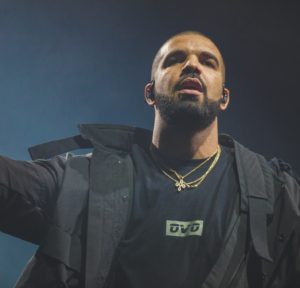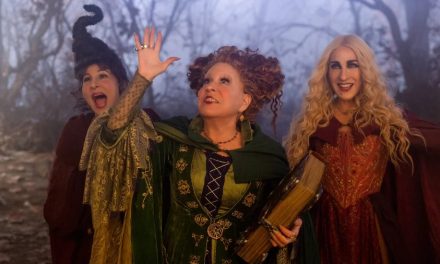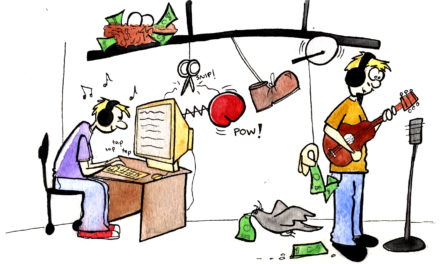“Blew up and I’m in the A still.”
Drake ad-libbed that line (original line: “Blew up and I’m in the city still,” the city being his hometown of Toronto) while performing “Still Here” during his Aug. 25 show at Philips Arena, one of many shows that he and rapper Future are playing around North America on their co-headlined Summer Sixteen Tour.
But Drake was never in “the A” to begin with. Nor was he ever from Detroit, Kansas City, Philadelphia or any other city in which he’s likely uttered some variant of that line — only one of a multitude of bars across his breadth of songs that reference his hometown of Toronto — so why does he feel the need to make his audience believe that he was ever from “the A”?
Many performing artists use platitudes to gratify their audiences. But the ubiquity of Drake’s reference to “the A,” “A-town” or claims that he “feel[s] like this could be the best crowd on the Summer Sixteen Tour” seemed vain and contrived. With mild eruptions from the audience at each reference — which diminished over his two-and-a-half hour set — the affectation served as it was intended: a crowd pleaser.
And this banal, albeit mild, form of appeasement is the epitome of Drake’s performance. He appeases the masses — he gives the people what they want. He creates and popularizes slang words and phrases (“the six,” “woes,” “YOLO”), is hyper-aware of the potentially meme-worthy aspects of his lifestyle and does things that seemingly, almost innocuously, enter into popular culture whether Drake acknowledges his attempts to do so or not.
His most recent album, Views, offers a perfect case study of that appeasement. Though cut in the ilk of musicians like Kanye West and Beyonce, both of whom have transformed their aesthetic and sound repeatedly as a means of adapting artistic expression, Drake decides to stay numbingly undeviating with his 81-minute album, content with its inevitable Billboard 100 No. 1 placing and the ancillary benefits that come with doing so. West’s progression from Late Registration (2005) to The Life of Pablo (2016) and Beyonce’s transition from a member of the Grammy-winning girl group Destiny’s Child to her most recent solo album, Lemonade (2016), were byproducts of album to album, song to song alterations of tone — Drake would spit on that notion with Views.
To use a baseball analogy, while West and Beyonce increasingly varied their secondary pitches into ballgames, despite the fact that their fastball was their best pitch, Drake pounded the plate with 97 mph bullets down the middle, confident that he could overpower hitters with his fastball alone.
After a pair of wildly successful mix tapes in 2015 (If You’re Reading This It’s Too Late and What a Time to Be Alive) Drake knew his latest work would chart well, so why change? He knew that Views’ album cover, a Photoshopped Drake perched atop the CN Tower in Toronto, would go viral.
“Views already a classic,” Drake raps on Views’ “Hype.” By all indications, a bull market for Views was a foregone conclusion.
Views was the byproduct of Drake’s attempt to please meme-loving internet users.
Drake willingly subjecting himself into a meme with Views’ cover exemplifies that wish.
In a world where musical monoculture is being rendered increasingly difficult by a changing media landscape (and is therefore considered kitsch by many), what Drake has built an empire out of is appeasing while appearing not to be. Akin to Russia’s 2014 annexation of Crimea, Drake has nonchalantly invaded aspects of cultural and linguistic society across North America and the world under a facade of effortlessness.
“I do my own propaganda,” Drake raps on Views’ “Hype.”
Drake has satisfied many — for now — by myopically betting that his sound and voice will sustain through the changing tides of cultural influence. Through his modus operandi of simplicity, authenticity and loyalty to his city; through his wide smile, hit records and courtside presence at Raptors games; through his affectations of implicitly referring to every city on his tour as his hometown and through an unchanging voice, Drake’s popularity is at an all-time high.
And that’s the issue. For musicians to grow, stay relevant and thrive in a world where innovation and imagination is the currency, they must be malleable to subtle or overt creative change, especially if they, like Drake, are at their apex.
Drake has routinely created words and phrases that are wildly popular for a short period of time, only to see the trend slowly dissipate as monoculture rears its ugly head. As soon as your great-aunt used the word “YOLO” in conversation and a large group of middle schoolers posted a video of themselves doing the “whip” in sequence, both became immediately corny, hackneyed and platitudinous.
Let’s hope the same thing doesn’t happen with Drake.
Avery Yang is a College sophomore from Los Angeles, California, by way of New York City.







